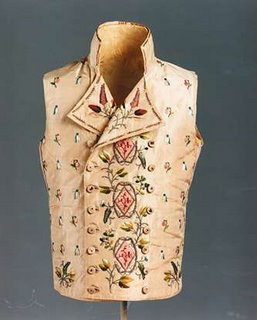 Contest extended! Because Thursday was a day of Blogger pain, we’ve decided to continue our chat with Raelene on Friday, February 2. I hope Blogger is feeling better and actually allows people to visit.
Contest extended! Because Thursday was a day of Blogger pain, we’ve decided to continue our chat with Raelene on Friday, February 2. I hope Blogger is feeling better and actually allows people to visit.
Today we’re joined by Raelene Gorlinsky, who’s here to tell us about her goals of breathing new life into Trad Regencies. Raelene has generously offered an e-book to a visitor who posts a question or comment today only–as usual, the Riskies will pick the winner!
Welcome to the Riskies, Raelene. Tell us about the new line.Cerridwen Cotillion is our new line of classic, traditional Regency romances. These are Heyer-style Regencies: strong and appealing heroines, focus on the manners and customs of the era, historical accuracy, period language, lots of emotion and love but no obvious sex.These stories are appropriate for both our adult readers and their youngdaughters!
The website is www.cerridwenpress.com. Click on the Cotillion sidebar banner to see the released books. Submission guidelines are on theSubmissions page of the site, along with the Call for Submissions that lists the specific Cotillion requirements.
What do you feel is the essence of a traditional Regency?
An entertaining and accurate reflection of the life and manners of the era.
How did you get into publishing?
I spent twenty-five years in the computer information communication profession, as technical writer, editor and manager. I started editing part time for Ellora’s Cave because it was an interesting variation from my day job in a computer department. It’s a lot more fun to work on “He caressed her body with his gaze” than “Key in the serial number and press Enter.” In January 2004 I moved to Ohio to take on the job of Managing Editor at Ellora’s Cave, allowing me to use my organizational, managerial, and editorial skills on a wide variety of projects. My position is now Publisher, and I supervise nineteen editors, deal with over 350 authors, manage our digital releases, still edit several authors of my own, and am enjoying this job more than any other in my life.
Your name’s synonymous with that of Ellora’s Cave and to some of us, that transition from steamy erotic romance to the polite world of Traditional Regencies seems a bit incongruous. How did the creation of the Cotillion line come about?
Well, Ellora’s Cave Publishing Inc (ECPI) is two imprints: Ellora’s Cave erotic romances (Romantica) and Cerridwen Press mainstream fiction. We are best known for being the leader and most successful publisher of erotic romance. But we’ve had our Cerridwen imprint for a year and a half now, putting out all types of genre fiction, especially romances.
 I’ve always loved Regency-set stories. My very first romances as a young girl were Georgette Heyer. When the big NY publishers abandoned the traditional Regencies because of low sales, I proposed to top management at ECPI that we could make a success of this genre as a line within our Cerridwen imprint. My theory and hope is that there are enough devoted tradReg readers out there who are now so hungry for new stories that we can lure them to try ebooks. And we will be bringing the books out in print following the digital release.
I’ve always loved Regency-set stories. My very first romances as a young girl were Georgette Heyer. When the big NY publishers abandoned the traditional Regencies because of low sales, I proposed to top management at ECPI that we could make a success of this genre as a line within our Cerridwen imprint. My theory and hope is that there are enough devoted tradReg readers out there who are now so hungry for new stories that we can lure them to try ebooks. And we will be bringing the books out in print following the digital release.
How do you think Cotillion will succeed where Signet and Zebra failed?
We have a couple of advantages.
~ Ebooks versus print books: The dynamics and monetary parameters for e-publishers are very different from large print publishers. We don’t need to sell nearly as many copies of a digital title in order to cover our costs – and hopefully will sell enough to make a profit! So we can capitalize on smaller niche markets.
~ New concept in cover art: I concur with people who feel that the standard covers helped kill the genre. The old tradReg cover art style hadn’t changed in decades. It wasn’t very interesting, and it certainly did not appeal to younger readers or draw new fans into the genre. And the covers were practically interchangeable from book to book, making them annoyingly repetitive and meaningless.
However, the core tradReg readers have some firm expectations for “their” book covers, and you can’t just ignore them. When Kensington tried a new cover style, their Regencies looked like contemporary women’s fiction — not appropriate or effective, and it did not succeed with readers.
So we have tried to create an image that is different and new, but is clearly reflective of the historic period. Our covers are all based on actual Regency artwork (portraits in the public domain). They are therefore both historically accurate and lovely, and we and our authors think they are extremely attractive and appealing.
~ Author participation: For small presses and e-publishers, authors must be heavily involved in self-promotion of their books, far more so that what is common for category lines from large print publishers. Our Cotillion authors are a great group, enthusiastic and active. We toss around a lot of ideas for promoting the books and the line. They are out there actively telling people about Cotillion. >>
 Is Cotillion looking for traditional Regency plots or plots that break the mold of what is expected in a traditional Regency?
Is Cotillion looking for traditional Regency plots or plots that break the mold of what is expected in a traditional Regency?
Cotillion stories may include not just the “drawing room” Regency stories, but other elements such as adventure, mystery or suspense. However, fantasy creatures and paranormal elements (except possibly an occasional period ghost) are not appropriate for this line.
We don’t want cookie-cutter stories, we would like new plot ideas. But they must remain firmly embedded in the social behavior and customs of the era. For example, heroines can be bold and unconventional – but in comparison to what was acceptable in 1820, not what would be considered “unconventional” nowadays. And there must be appropriate responses and consequences to their behavior.
We also accept Regency-set historicals as regular Cerridwen romances, not part of the Cotillion line. Those stories could be of longer length or greater sensuality than is appropriate for Cotillion. And we have erotic Regency romances at Ellora’s Cave!
What do you read for fun (assuming you do read for fun, that is!)?
I wish I had a lot more time to read for pleasure! My To-Be-Read shelves contain over 800 books – I guess I’m a bit behind on my reading. 😉 I try to read in a lot of genres, even Young Adult. Within my favorite genres, I select by author. My current preferred genre is paranormal and vampire romances with a lot of sensuality. Right now I’m dying for the next books from J.R. Ward, Alexandra Ivy, Rosemary Laurey, and Jory Strong. I enjoy contemporary romantic suspense (but not too dark) — Linda Howard, Jayne Ann Krentz, Lisa Marie Rice. My embarrassing secret addiction is several Harlequin Presents authors — those over-alpha Australian and European millionaire businessman heroes. I also read a goodly number of anthologies — fantasy, mystery, and romance. It’s easier for me to steal time for a shorter story in my schedule, plus that way I get to taste a lot of authors.















 Another book I loved this year, because it had the power to take you into another time, was Kate Dolan’s
Another book I loved this year, because it had the power to take you into another time, was Kate Dolan’s 


